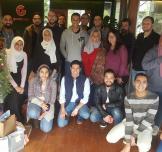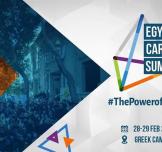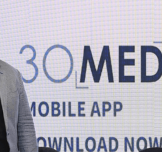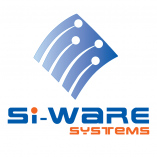Business model innovation

Photo credits: i60.cz, Google ngram viewer, Vigga, Qarnot computing, airwolf3d.com, scorenashville.org
This article was originally published on Rapid Innovation in Digital Time Blog.
A rising topic
According to Google Books Ngram Viewer (charting frequencies of a specific sentence using yearly count of n-grams in books), business model innovation topic is rising up since 2000.
It corroborates the fact that the reference tool for a business model, the Business Model Canvas, just came recently out: the book Business Model Generation was published by Alex Osterwalder in 2009.
So if you’re a starter in business model innovation, don’t freak out: there aren’t centuries of literature about it!
In France, BPI (public investment Bank for innovation) included in 2014 business model innovation in its innovation new generation typology. Buisness model innovation is listed among marketing and commercial innovation, product and service innovation, technological innovation, process and management innovation, and social innovation, and it includes collaborative economy.
Sorting creative Business Models
Digital industry is a boiling industry for innovative business models. We found many recent initiatives in this industry, but it’s far from being the only one. We’ve sorted these distinctive set-ups according to their main attribute of differentiation.
1- Pricing and offering
- Low-cost connectivity for narrowband Internet of Things by Sigfox: €1 per year and next self-charging chipset! In the same arena: Rfinet and ThingPark Wireless by Activity;
- Grobocopatel is a huge grain producer in Argentina without owning any land, tractor or harvester: its offering is to lead skilled teams of cultivators, renting the equipment they require to do the job and leasing the land.
- Vigga, a manufacturer of a high-quality clothing line for children, is renting them instead of solving them; similarly, l’habibliothèque is a library for clothes: you subscribe, you rent a cloth, try it, and after 10 days, decide whether you keep it and buy it, or not.

- ATT launched sponsored data package where a sponsor is subsidizing your data usage.
- Fitness trackers come a dime a dozen and worse, they all seem to do the same thing: Pivotal Living is charging $12 a year for access to the apps related to its Life Tracker 1.
- Schneider Electric offers to share energy savings with smart cities which take their equipment; similarly, Energineo supplies LED light bulbs for free to supermarkets, and earn money through energy savings.
- Rent drones, ERP software or robots to manage your farm, with a price based on your cultivation area.
- Medical image scan via ultrasound with a handheld device at $100 by Butterfly Network.
- Youdrive by AXA adjusts dynamically the cost of car insurance for young drivers, according to the quality of their drive: cost can decrease from 50%, and it provides coaching on the web to help you improve the way you drive your car.
2- Distribution and channels
- The internet has brought many services online, directly from provider to customers, such as Software As A Service (like CRM software Salesforce) or e-commerce marketplace like Amazon.
- Product innovation can drive business model innovation: in the case of Gutenberg project by Pernod Ricad, new distribution channel direct to the customer will have to be set-up to refuel the liquid library.
- Big Moustache is a subscription service to receive fresh razor blades at home.
- Agriconomie is a marketplace dedicated to farmers letting them buy supplies at a lower cost.
- MyRecycleStuff is a circular network for barter.
- Exogenbio offers you to manage your DNA damage online, and Genetrainer is a fitness coach genetically guided.
3- Sharing
- Sharing economy is reinventing the way we use product and also the way we access them, combining Internet platforms to connect users and producers (Peer to Peer economy), with a social link with the owner of the product; sharing empowerment can turn us as producer, delivering a service: ‘I lost my job I found an occupation’.
- Qarnot computing offers a way to collaborate on energy and computing resources: Qarnot computing device lets you heat your home while offering computing capacity to others.
- TripnDrive lets you rent your car instead of leaving it at the airport parking while you are travelling.
- OpenPath stores your personal urban data, lets you review project proposals, and donate your data to a cause you choose.
4- Design and manufacturing
- Cocreation gets a foothold in design: Threadless and Quirky manufacture respectively the T-shirts and product inventions created and elected by the community.
- 3D printing will progressively unleash new manufacturing models, with emerging local fab resources; already printing make-up, heeled shoes, sugar or bricks: SolideXpress prints bricks for houses, 50% lighter, prosthesis that can be frequently replaced, unbelievable parts in sugar or chocolate or without shape, for nanotech, and via biomimetism; the next step for 3D printing device will be massive propagation and dropping costs.
- Local fab labs are not limited to 3D printing: Wikispeed in Seattle shows that you can put together a green car in a micro-factory round the corner.
- Echy captures the sunlight outside the building, and brings it inside through optical fibers; editors’note: I know, it’s not very much a ‘business model’ innovation per se, but it’s so creative.
- Gemmyo offers high-end jewellery designs that customer can personalize online with his choice of metal and gemstone, and that is delivered within 3 weeks.
5- Two-sides and asymmetric
- Google is the most successful archetype of ‘two-sides‘ business model: user doesn’t pay for the service which is sponsored by advertising (sponsored links and ad sense);
- Mobeye and Localeyes let brand reward consumers by taking pictures of their products in retail, and answering survey; Clic and walk (France), pays consumers for collecting real-time data, taking pictures, and ingesting comments;
- Asymmetric business models do ‘not compete for direct consumer revenues, but to control key links in the digital value chain, and make money in other markets such as consumer electronics, online advertising, software licensing, e-commerce; they buy you unfair advantages both in complementary victimized & home markets’ says Vision Mobile; Amazon sells its reader and tablet devices at zero margin to bring consumers to its e-commerce marketplace; similarly Whatsapp doesn’t make revenue from users using its messaging service, like telcos did with SMS: it still has to invent the monetize its huge user base and viral service;
- Internet of Things (IoT) business driven model
- Based on data generated by your connected object (i.e refrigerator), detect repair lead, and sell them to pre-approved contractors;
- Sell your product as a service: a $1,000 appliance is sold through a $20/month subscription, and risk is monitored through its tracking sensors;
- Providing an ad-driven device: consumer gets the refrigerator for free in exchange for purchasing a minimum amount of food online.
- APIs driven Business Model
We’ve talked about distributed business models with APIs. Here are 5 ways to be creative in your API business model:
- Charging directly for an API, by call or subscription.
- Using API access as a premium upsell.
- Correlate the value of your API to revenue-generating activities through your API; thus, sharing end-user revenue with the developer community which create paid apps on top your API.
- Index the value of your API to the improvement of operational efficiency, innovation speed, and Time to Market.
- Increase distribution, audience or indirect revenues, through APIs roll-out at partners.
More: 20 API Business models in 20 minutes (video), and (text): pays as you go, tiered, freemium, unit-based, transaction fee: API user pays; rev-share, affiliate: API user gets paid; indirect: content acquisition, SaaS, content syndication, internal use.
- Platform business model
- Extending the concept of API and modularity to your whole business: ‘Businesses break down their services, products and capabilities into discrete units so that external partners and customers can plug directly into the business experience they need.
- ‘Platforms enable interactions, and interactions create platform value.
Though these business models are creative, they have not proven yet to be successful: often they are fresh from the oven. The idea of this review is more to inspire you than to present references.
Business Model Design Thinking
On might be lost following all this creative examples. One path remains clear: you should start from the value created by your innovation to design its business model. I would recommend a simple 4 steps approach:
1- Observe your users pattern, qualify the value created by your innovation in his recent book ‘value proposition design’, Alex Osterwalder speaks of gain & pain relief in the job to be done;
2- Business model should translate elegantly the usage more easily adopted, and propose a fair share between the players of the ecosystem, a win-win which will let the ecosystem grow;
3- Be a bit systematic in assessing other business models possibilities. Business models can also be multiple as in the two-side models.
4- Test, and iterate; and take the road that scales: the way which enables fast growth without having to change radically your service or organization.






























































EgyptInnovate site is not responsible for the content of the comments